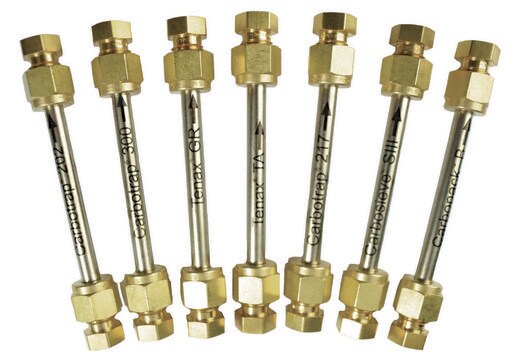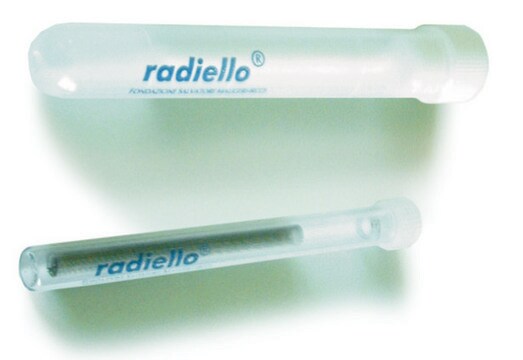29744-U
Carbotrap® 217 Thermal Desorption Tube
stainless steel, O.D. x L 1/4 in. × 3 1/2 in., preconditioned, pkg of 10 ea
Synonym(s):
Carbotrap® 217
About This Item
Recommended Products
Product Name
Carbotrap® 217, O.D. × L 1/4 in. × 3 1/2 in., stainless steel TD tube, Sealed with Brass Endcaps, preconditioned, pkg of 10 ea
material
stainless steel TD tube
Quality Level
Agency
EPA TO-14 (Air Toxics)
EPA TO-17
product line
Carbotrap®
feature
preconditioned
packaging
pkg of 10 ea
greener alternative product characteristics
Waste Prevention
Safer Solvents and Auxiliaries
Learn more about the Principles of Green Chemistry.
sustainability
Greener Alternative Product
technique(s)
active air sampling: suitable
O.D. × L
1/4 in. × 3 1/2 in.
matrix
Carbotrap® 217 (Packed with Carbotrap B and Carboxen-1000)
Carbotrap® carbon molecular sieve (CMS)
Carboxen® 1000 carbon molecular sieve
application(s)
air monitoring
environmental
industrial hygiene
compatibility
for use with PerkinElmer, Markes, DANI, OI Analytical, and Shimadzu Instruments
greener alternative category
Looking for similar products? Visit Product Comparison Guide
General description
Legal Information
Storage Class Code
11 - Combustible Solids
WGK
nwg
Flash Point(F)
Not applicable
Flash Point(C)
Not applicable
Regulatory Listings
Regulatory Listings are mainly provided for chemical products. Only limited information can be provided here for non-chemical products. No entry means none of the components are listed. It is the user’s obligation to ensure the safe and legal use of the product.
JAN Code
29744-U:
Choose from one of the most recent versions:
Certificates of Analysis (COA)
It looks like we've run into a problem, but you can still download Certificates of Analysis from our Documents section.
If you need assistance, please contact Customer Support.
Already Own This Product?
Find documentation for the products that you have recently purchased in the Document Library.
Our team of scientists has experience in all areas of research including Life Science, Material Science, Chemical Synthesis, Chromatography, Analytical and many others.
Contact Technical Service






